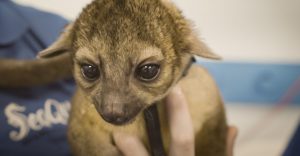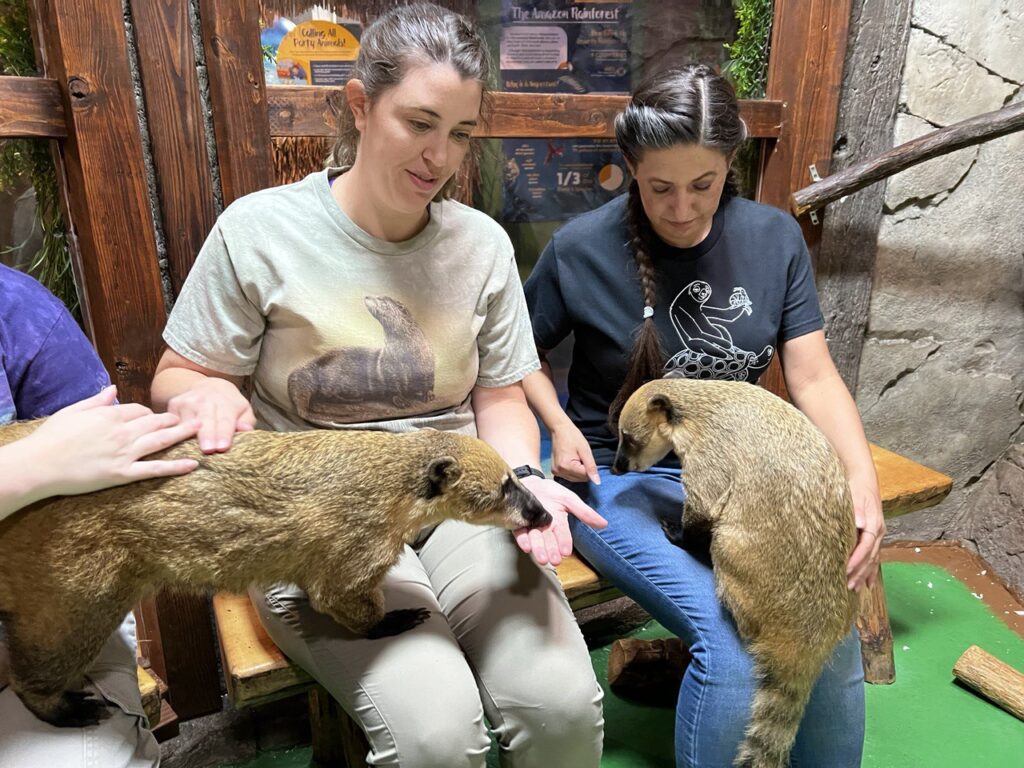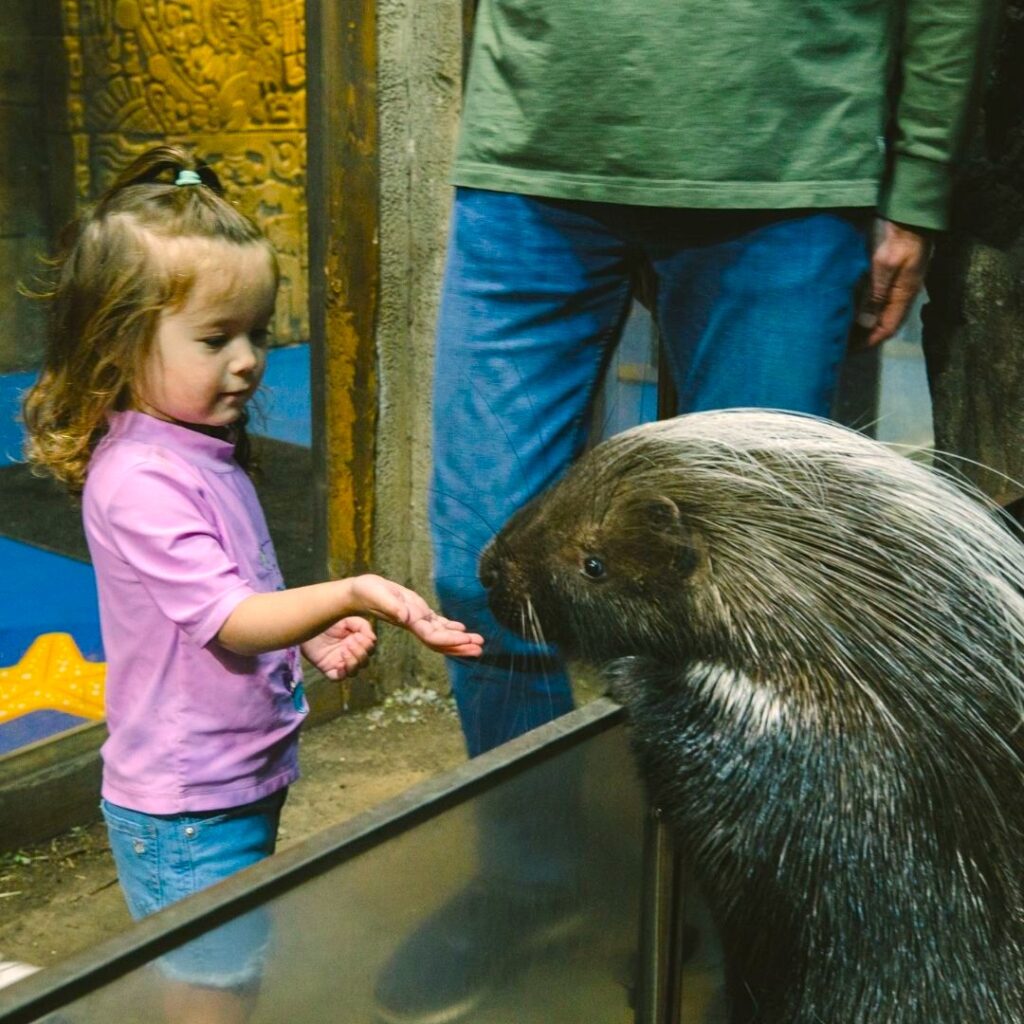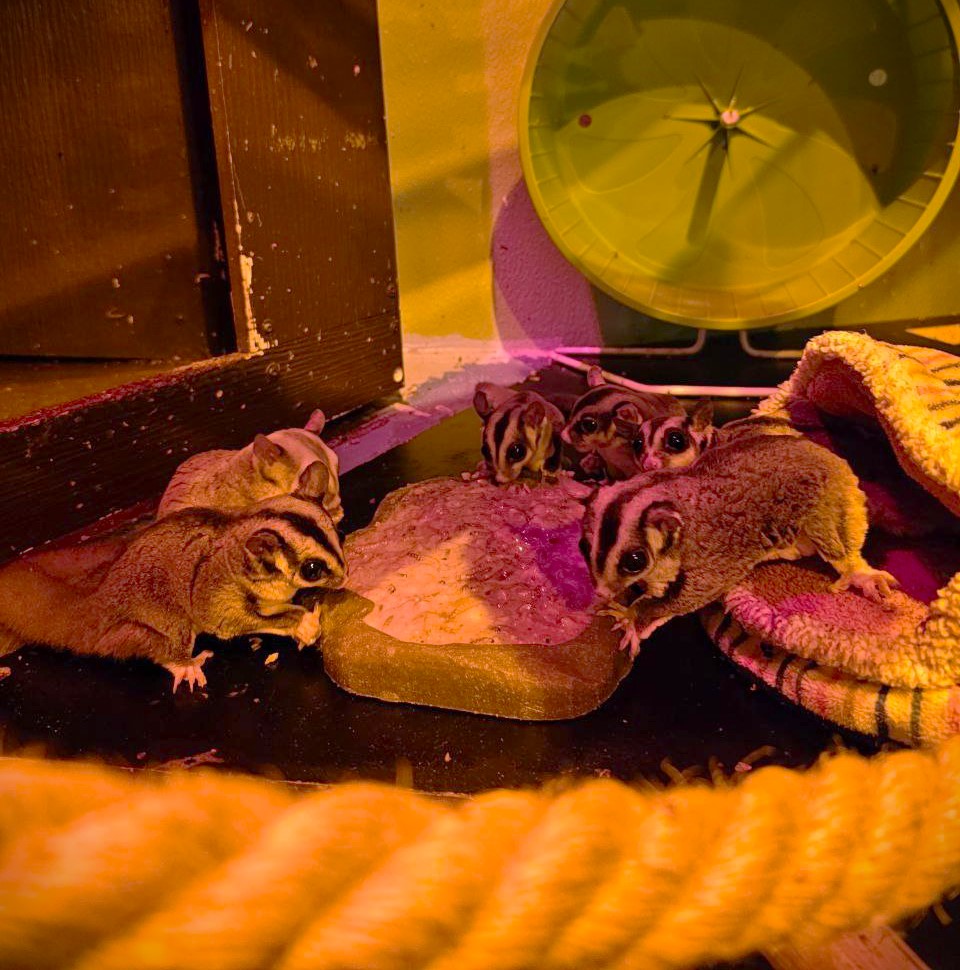SeaQuest Guide to Kinkajous
Share it on:
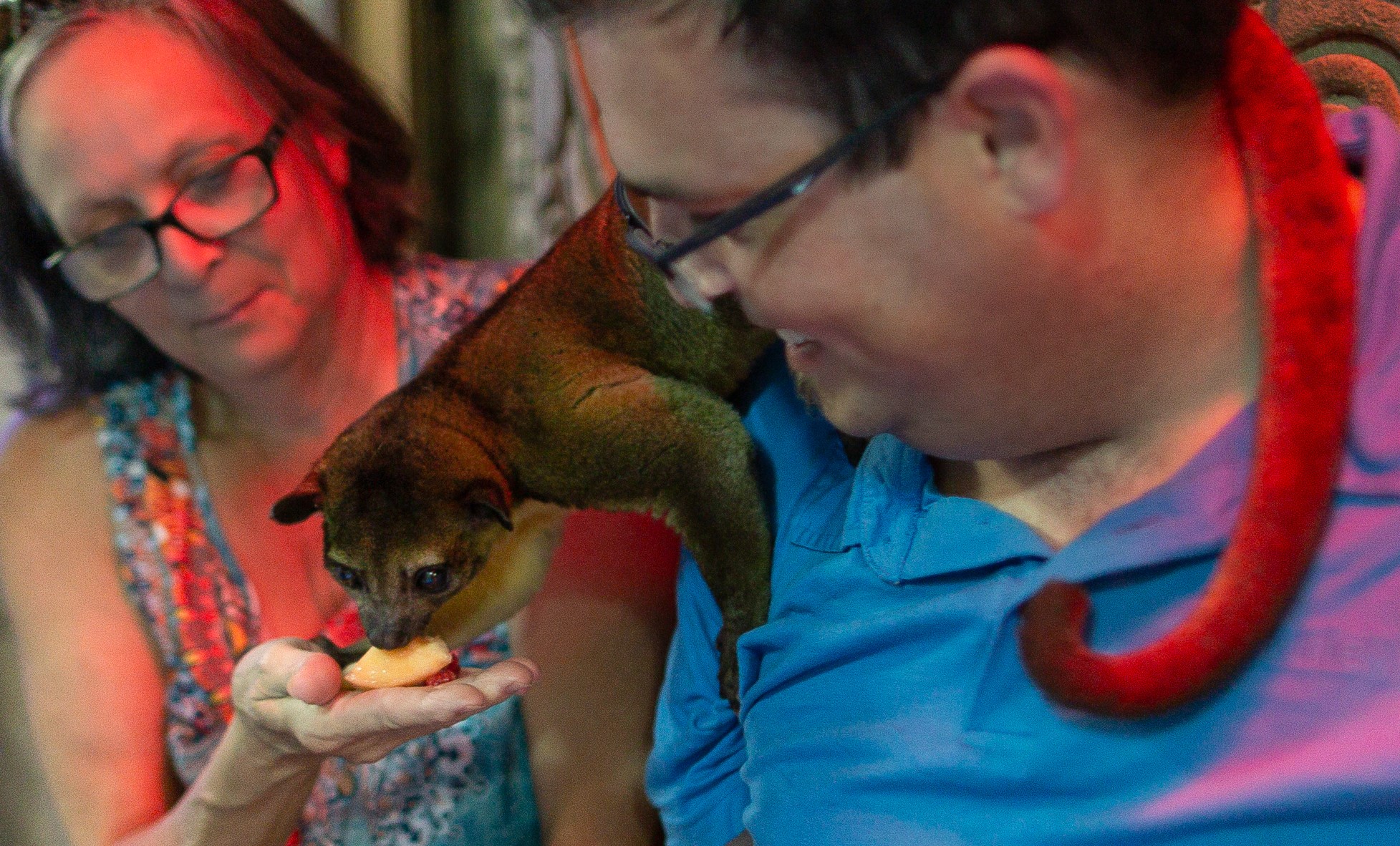
A kinka-who? These little guys look like a cross between a monkey and a bear. They are actually one of the cutest-looking mammals from the rainforest: the Kinkajou! They belong to the scientific family Procyonidae – the same family as raccoons, coatis, and ringtails!
Meet the Kinkajou
Kinkajous are often mislabeled as primates because they have many similarities to monkeys, such as their feet and prehensile tails. Belonging to the Carnivora animal order, Kinkajous are nocturnal animals that live in trees most of their lives. Unlike raccoons and coatimundi, they do not walk on the ground. Instead, their ankles allow them to climb up and down trees with their heads first.
Where Do Kinkajous Live?
These mammals originate from the Central and South American rainforests. Their habitats are Costa Rica, southern Brazil, southern Mexico through Belize, and near Ecuador. They can also be found in Panama.
What Do Kinkajous Eat?
As omnivores, Kinkajou diets mainly consist of fruit and nectar, though they occasionally eat veggies or small insects. They can eat nectar from flowers due to their long tongue, which is 5 inches in length. They have also been known to collect honey from beehives with the help of their tongue. Since these animals mostly live in trees, they are also known to eat frogs, bird eggs, and flowers in the wild. Even though they have very sharp-cutting teeth, these animals are still considered frugivorous.
How Long Do Kinkajous Live?
In the wild, Kinkajous have an average lifespan of about 20 years. However, with proper health care and diet, Kinkajous can live up to 30 years in captivity!
How Big Do Kinkajous Get?
Kinkajous generally grow between 16 and 30 inches long, but their tails alone can grow between 15 and 22 inches. On average, they weigh 3 to 10 pounds.
Did You Know?
Kinkajous are lovingly nicknamed the “honey bear” due to their massive love for honey!
Other Fun Facts About Kinkajous!
- Kinkajous have a prehensile tail that helps them balance when eating food, sleeping, and keeping themselves warm at night.
- Kinkajous may live in small groups or alone.
- Kinkajous are the only species of the genus Potos
- Kinkajous are known for their high vocals, which include bark, squeaks, and grunts. They use these sounds to defend themselves, and their sounds have resulted in a nickname for this species: “La Llorona” in Spanish, which means crying woman.
- Kinkajou’s main method of communication is scent. They have scent glands near their mouth, throat, and belly that help mark their territory.
Do Kinkajous Make Good Pets?
Despite their cute appearances, owning a Kinkajou is a significant responsibility and no easy task. Veterinary bills are a lot more costly for these kinds of exotic pets. Kinkajous are also nocturnal, so they are known to keep some owners up most of the night. Maintaining their diet can also be costly, as 90% of it consists of food that has to be human-grade. Check with State laws and local ordinances which can differ between states.
Since these animals can be a little more high maintenance, they will also require more room and space for activities like exercising. If you’re interested in more details on being a Kinkajou pet owner, feel free to contact or visit a SeaQuest near you. Our animal husbandry team brings years of experience and knowledge and they can guide you in the right direction for information and tips.
Are Kinkajous Endangered?
Though not currently labeled as an endangered species, Kinkajous are often hunted in the wild for their fur, specifically to make fur saddles and wallets. As a result, the kinkajou’s conservation status is listed as threatened. Deforestation and fur hunting have reduced a significant amount of the Kinkajous’ population. Learn more about how deforestation threatens numerous animal species in our Guide to Deforestation.
SeaQuest is committed to protecting our world’s oceans and endangered animals. We focus on how to be proactive in finding solutions. To learn more about how you can help SeaQuest with this cause, book your visit today at any of the following locations: Utah, Las Vegas, Dallas-Fort Worth, Sacramento, Minneapolis, Lynchburg, and New Jersey.

